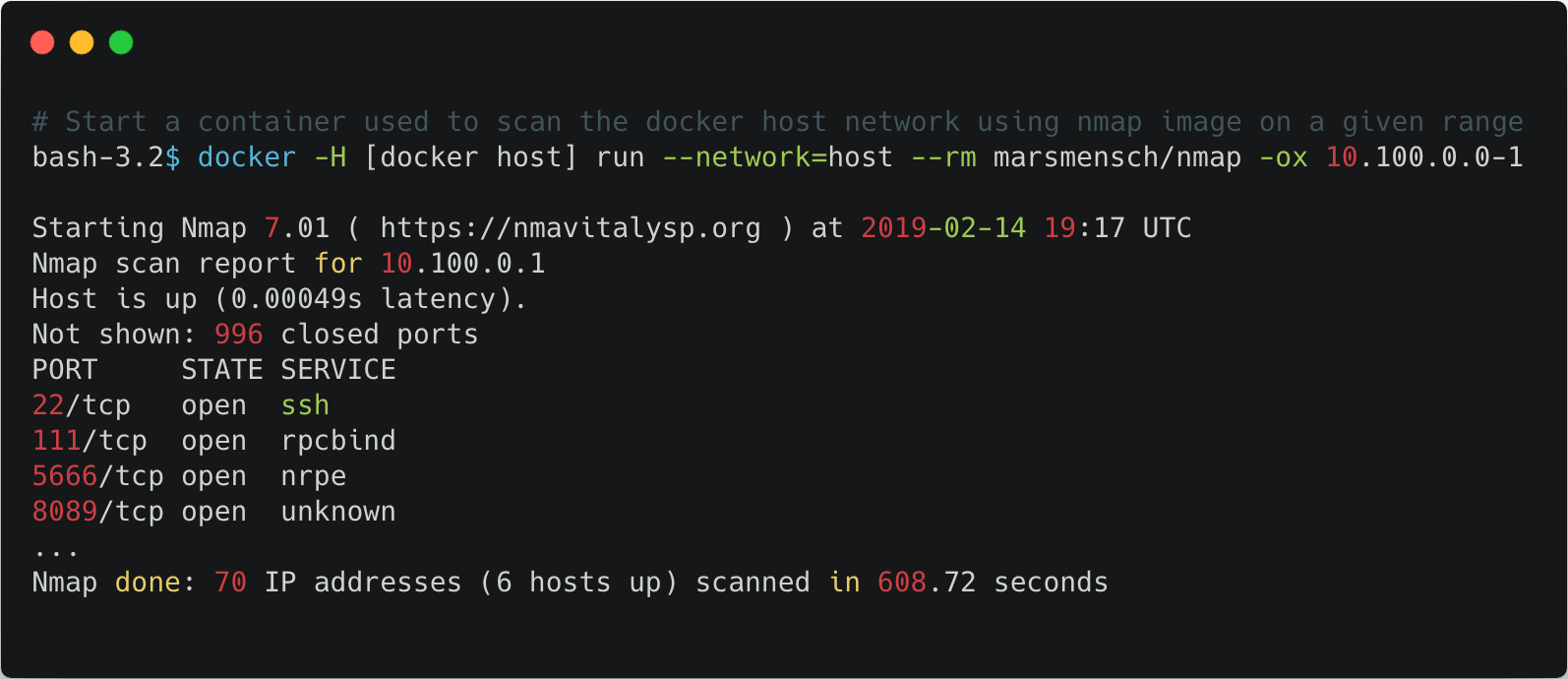

Specifying the runtime conditions for containers spawned from the image.Outlining the exact commands to run during the build process.Providing metadata about the author and image properties.Detailing the parent image or the initial state that the image should start from.The primary responsibilities of a Dockerfile include:
#Docker run image daemon expose port how to#
A Dockerfile is a plain text file that contains instructions that tell the Docker build engine how to create an image.

In most real world situations, it’s preferable to create images from a Dockerfile instead. And finally, as we saw above with the -change flag, we often have to manipulate the final image using additional commands to access fairly basic Docker functionality. Due to the way that container images are built up with a new layer for each additional action, it’s also easy to accidentally create unoptimized images with extra layers that are not needed.
#Docker run image daemon expose port series#
Since the process relies on logging in and completing a series of steps manually, it also is more error prone. This makes maintaining and updating the image very challenging over time. Images created interactively don’t provide a clean record of what actions were taken to create the image. While creating images interactively is sometimes more comfortable for beginners, it does have some serious disadvantages. This is a quick way to interactively create images to test out ideas, figure out dependencies, etc. To demonstrate, we can start up an Ubuntu 18.04 container with a Bash shell session by typing: Lastly, we need to spawn an actual shell like /bin/bash so that we have an interface to interact with the container. Additionally, we need to use the -tty or -t flag to allocate a psuedo-TTY to be able to run interactive commands. Pass the -interactive or -i flag to indicate that the container’s STDIN should be opened. We need to pass in a few arguments to the docker run command to start the container with the correct configuration. To begin, start up a container using your chosen parent image. This is a good way to test ideas and validate your processes. You can run a container image with an interactive shell, perform the actions needed to get the operating system into the desired state, and then save the result. One of the easiest to to get started with is to interactively create images. There are a few different ways to create container images. Images that have common ancestry share filesystem layers, allowing for reduced overhead and greater consistency between images. Each filesystem layer represents a point-in-time record of the filesystem state after certain actions. Images are also available preconfigured for different programming languages and ecosystems.Ĭontainer images are built by applying “layers” onto previous images. Parent images are available for most popular Linux distributions, often in a variety of configurations. Most parent images typically provide a filesystem structure that resembles a minimal Linux system, package management tools, and the core functionality that you’d expect from a command line environment. Images include the filesystem layout, all of the required applications and dependencies, and configuration.Įach image is built from either a parent image (an image used as the starting point for the new image) or from an empty pseudo-image called scratch. What Are Container Images?Ĭontainer images are static bundles of files that represent everything a container runtime, like Docker, needs to run a container. In this guide, we’ll talk about how to create your own images and some of the considerations to keep in mind as you do. Whether customizing readily available software, packaging and running internal tools, or creating images as a release medium for your own projects, creating images is a fundamental part of the container paradigm. However useful shared public images are, most users will also require custom images that define how to run their own tools and services. Viewing container images as a packaging format also allows users to take advantage of pre-built images, shared and audited publicly, to reduce development time and rapidly deploy new software. Being able to deploy applications of any kind on a standardized platform with robust tooling and low overhead is a clear advantage over many of the alternatives. The rise of containerization has been a revolutionary development for many organizations.


 0 kommentar(er)
0 kommentar(er)
